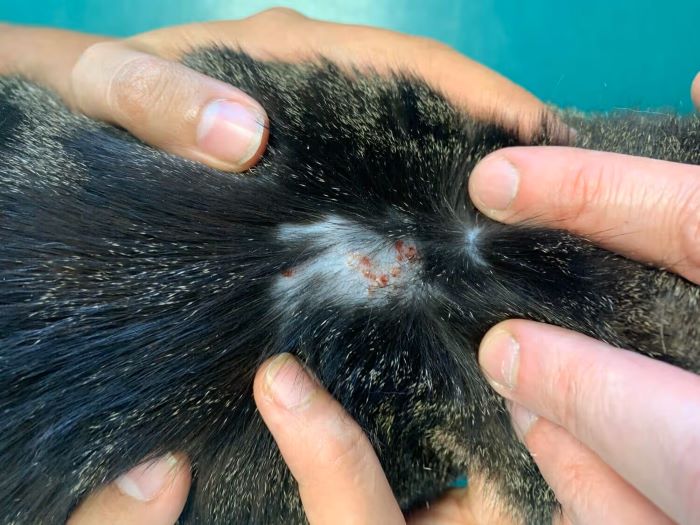Miliary dermatitisrefers to a specific way in which feline skin responds to inflammation and/or irritation. Such a skin reaction is characterized by the formation of tiny, seedlike crusts that frequent the head, neck, and tail regions of the body. In extensive cases, the entire body might be involved.
Furthermore, the miliary reaction is quite itchy, and leads to scratching, rubbing, and licking of the affected skin. Hair loss often results as a result of these activities. Often the irritation that miliary dermatitis causes is so great that the affected cat becomes easily agitated and twitches its skin when disturbed or touched.
The potential causes of miliary dermatitis are numerous. Irritation caused by external parasites is the most common cause of localized miliary reactions. Allergies, including food, inhalant, and contact allergies, are other potential causes.
In addition, adverse reactions to medications and drugs and fatty-acid deficiencies in the diet have also been implicated as inciting feline miliary dermatitis. Treatment for feline miliary dermatitis is aimed at correcting the underlying cause of the disorder, if this is known.
For those cases in which an underlying cause cannot be identified, treatment with corticosteroids can provide relief from the clinical signs. Antibiotics are rarely necessary, since bacterial infection is rarely a component of this disorder.



